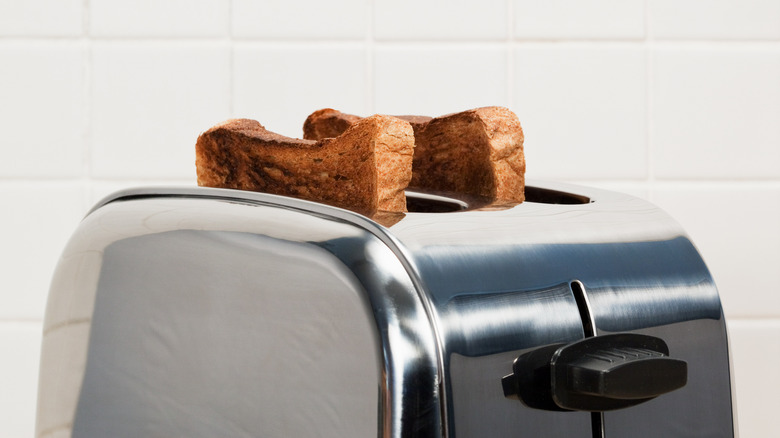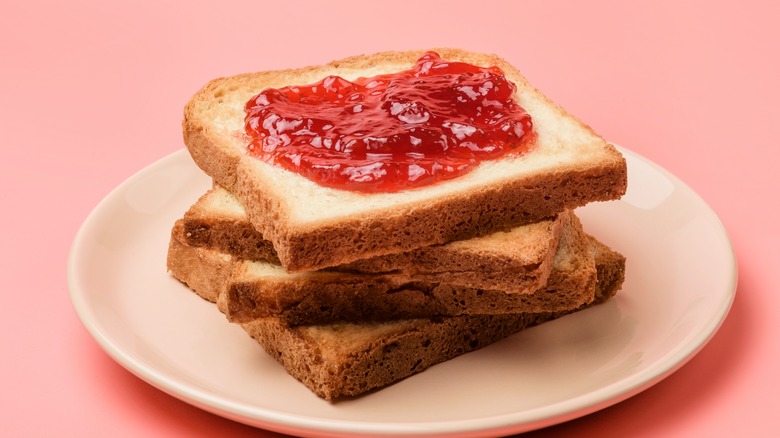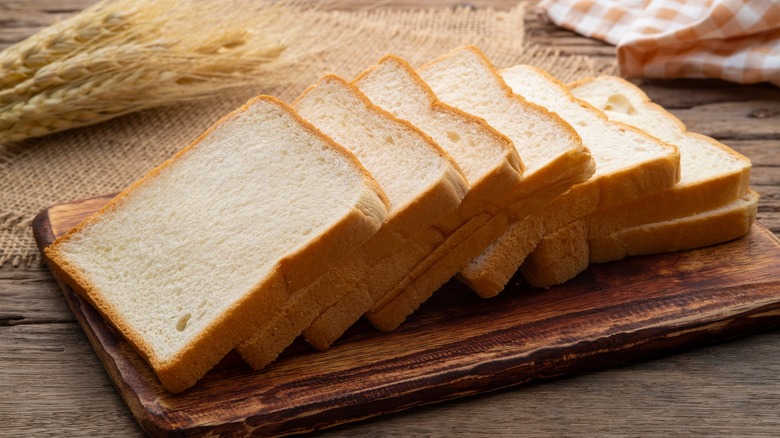Why It Seems So Impossible To Get 'Perfect' Toast
When you're making breakfast in the mornings, you can't go wrong with a slice of toast. Whether you prefer to spread some peanut butter, fruit jam, avocado, or just plain butter on top, some toasted bread can be the perfect complement to other breakfast foods — or delicious on its own.
Unfortunately, it can be frustrating trying to navigate achieving the ideal toasted color on your bread each time. Even when you keep the toaster settings on the same number, you may notice a difference in how your bread turns out.
As it turns out, moisture plays a big part in how well your bread will crisp up. Different kinds of bread will have different moisture content. Bagels, for example, are typically a little drier than your standard slices of white bread, and will therefore crisp up a little faster. White bread contains a little more moisture and may take some extra toasting time to achieve that perfect golden-brown exterior.
Pay attention to temperature differences
In addition to the bread's moisture content, the temperature of the bread before it's placed in the toaster can also have an impact on how well it crisps up. If you store your bread in the fridge or freezer, it may need a little extra toasting time. Still, the toaster can be a great way to defrost the frozen bread if you need a quick heat-up.
The toaster's starting temperature can affect your bread, too. If you're heating up several slices consecutively, the first and last slices will probably look pretty different. While the toaster has to heat up from room temperature to toast the first slice of bread, it will hold onto that heat for the following pieces. Your final slice will probably wind up a little darker and crispier than the first.
In addition to the bread's temperature, the type of bread you choose to toast will have an impact on how you should be heating your bread as well.
The type of bread will have an impact, too
When it comes to making the perfect slice of toast, some breads are better than others. If you're baking up some fresh bread, waiting until it's a day old will yield the best results, as there won't be as much moisture. Lighter breads, like brioche, require a low and slow heating method if you want to toast them. Whole-grain breads are a little more adept at handling the heat.
If you accidentally leave your bread in the toaster for a little too long or choose a bread that can't handle the heat, you could burn it. When you start to smell that unpleasant odor wafting out of your kitchen, chef Silvia Baldini told Food & Wine that there's a simple way to salvage it: freeze the burnt bread. She states that this stops the cooking process completely. As long as your toast is only burnt on the exterior, she suggests grabbing a cheese grater and scraping off the charred bits.


